Stainless steel, a versatile and robust material, offers a wide array of solutions for various design challenges. From high corrosion resistance requirements in harsh environments to high strength demands, easy formability, and weldability, stainless steel is a go-to material for architects and designers. Equally, stainless steel provides a variety of surface treatment solutions, helping architects realize their aesthetic aspirations. From ordinary matte treatments, textured patterns, and soft polishing of hues to high-polished mirror treatments, stainless steel offers a plethora of options for imaginative designers.

The 2B finish, also referred to as a mill finish, is a bright, cold-rolled finish that is typically produced by descaling the metal in a pickling bath and then brightening it in a series of rolling mill stands equipped with tension controls for a smooth, flat surface. This finish is commonly used in industrial applications, where its lack of reflection is an advantage.

The BA, or Bright Annealed finish, is smoother and brighter than a 2B finish. It is produced by heat-treating the steel in a controlled atmosphere furnace. This finish is more refined and is used in applications where a smooth, decorative finish is required. It is often used in home appliances, kitchen utensils.
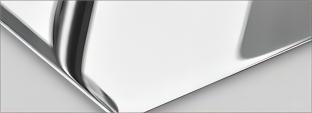
The mirror finish , also known as a No. 8 mirror finish or super mirror finish, is a highly reflective, mirror-like finish, achieved by polishing the stainless steel. It is often used in decorative applications where a highly reflective surface is desired. This finish is commonly seen in mirrors, reflective architectural panels, and kitchen appliances. For projects with higher requirements, we can provide a customized super mirror finish.

The brushed finish, is achieved by polishing the stainless steel with grit belts or abrasive pads. The brushing process creates a distinctive look with a pattern of very fine lines parallel to the brushing direction. This finish is often used in architectural applications, kitchen appliances, and automotive parts. It includes subcategories such as stainless steel hairline, stainless steel No. 4, and stainless steel satin finishes. For more information on how to distinguish these finishes, please refer to our another article .
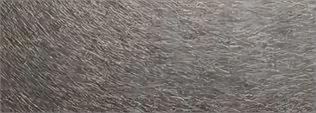
The vibration finish is a non-directional finish, which creates a uniform texture over the stainless steel surface. It is often used to hide the fingerprints, dents, scratches, or machining errors. This finish is commonly used in architectural applications.
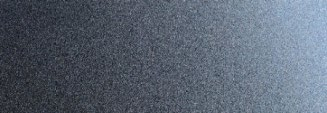
The
bead blasted finish
is a dull and non-reflective finish, produced by blasting the surface of the stainless steel with small beads under high pressure. It is often used in architectural and industrial applications where a uniform matte finish is desired. This finish is commonly seen in architectural panels, industrial equipment, and kitchen appliances.
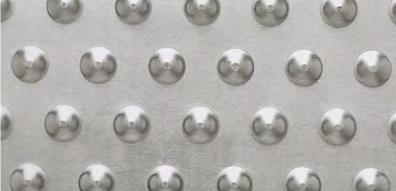
The textured finish , also known as punched or stamped or hammered stainless steel finish, involves pressing a pattern into the surface of the metal, creating a textured surface. This finish is often used in decorative applications where a unique, custom appearance is desired. Classic finishes like 5WL and 6WL belong to this category.
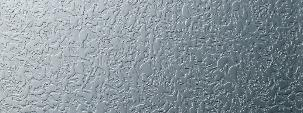
The embossed finish is a process of creating a raised or sunken design in the stainless steel surface. It is often used in decorative applications where a three-dimensional pattern is desired. Unlike textured finishes, which use instantaneous impact force, embossed finishes use more of a rolling pressure to form patterns. Classic finishes like linen belong to this process.

The
etched finish
is achieved by applying a chemical process to the surface of the stainless steel to eat away at the metal in a controlled manner. This finish is often used in decorative applications where a custom design is desired. It is commonly used in architectural panels, and elevator interiors, like elevator cab and elevator door.
It's important to note that, in principle, the following coloring methods can be combined to achieve the desired effect for your project.

PVD is a process that uses a vacuum to deposit layers of thin films on the surface of the stainless steel. This process can be used to create a variety of colors on the stainless steel surface.

Chemical coloring is a very traditional process that involves the use of chemicals to color the stainless steel surface. This process can create a wide range of colors and is often used in decorative applications. However, it's worth noting that this process is gradually being phased out due to environmental and eco-friendly effect concerns. Currently, only black stainless steel still uses this process.
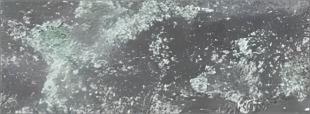
Copper surface plating is a process of depositing a layer of copper on the surface of the stainless steel. This process can create a unique, warm finish on the stainless steel surface. This finish is commonly used in projects needs to be antique and luxury. Compared to real copper, it offers a very similar effect but at a much higher cost-effectiveness.
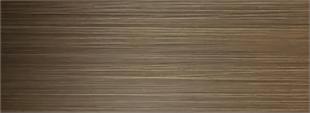
AFP, or anti-fingerprint coating , is a process that involves adding color components to prevent fingerprints on the stainless steel surface. This coating is often used in applications where a clean, fingerprint-free surface is desired. It is very common used in many projects. Please note that AFP itself does not contain color, and usually comes in Glossy and Matt types. However, some color components can be added to meet some project coloring needs. Sometimes, it is also used in combination with copper plating and PVD.
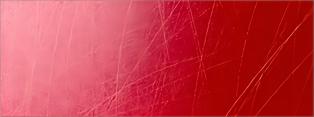
Powder coating is a type of coating that is applied as a free-flowing, dry powder. This coating is often used in applications where a durable, corrosion-resistant finish is desired.
Anodizing is an electrochemical process that converts the metal surface into a decorative, durable, corrosion-resistant, anodic oxide finish. This process can create a wide range of colors and is often used in decorative applications.

The versatility of stainless steel finishes allows for the combination of different techniques to achieve unique and customized effects. This adaptability caters to the specific needs of various projects. For instance, the
water ripple effect
is a combination of mirror finish and stamping techniques. This unique finish creates a pattern that resembles ripples on the water surface, adding a dynamic, visually appealing element to the stainless steel surface. If you are considering a combined finish for your project, our team at X-Metal is available to provide advice and suggestions tailored to your specific needs.
Stainless steel finishes not only enhance the aesthetic appeal of the material but also increase its durability and longevity. These finishes can provide additional benefits such as increased corrosion resistance, improved reflectivity, and enhanced strength. Moreover, they can also influence the material's performance under various conditions, such as its reaction to sunlight or its thermal conductivity.
Choosing the right finish for your stainless steel project involves considering the desired aesthetic, the intended use of the material, and the conditions it will be exposed to. Factors such as the project's location, the local climate, and the maintenance requirements should also be taken into account. Please note that stainless steel comes in various grades, offering a wide range of solutions for various design problems, from high corrosion resistance requirements in harsh environments to high strength demands, easy formability, and weldability. Similarly, stainless steel can provide various surface treatment solutions, helping architects realize their aesthetic aspirations. From ordinary matte treatments, textured patterns, and soft polishing of hues to high-polished mirror treatments, stainless steel offers a plethora of options for imaginative designers. Surface gloss treatments should be used carefully to avoid unintended reflections or heat reflections. Special attention should be paid to buildings with south-facing facades or recessed facades.
Stainless steel finishes offer a world of possibilities for architects and designers. By understanding the different types of finishes and their characteristics, you can choose the perfect finish for your project, enhancing both its aesthetic appeal and its performance. At X-Metal, we pride ourselves on our expertise in stainless steel finishes and our commitment to providing high-quality products and services. If you have any questions or need further assistance, please don't hesitate to contact us. We are here to help you make the best choice for your project.
By continuing to use the site you agree to our privacy policy Terms and Conditions.